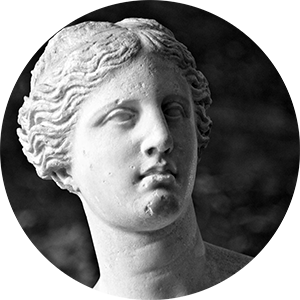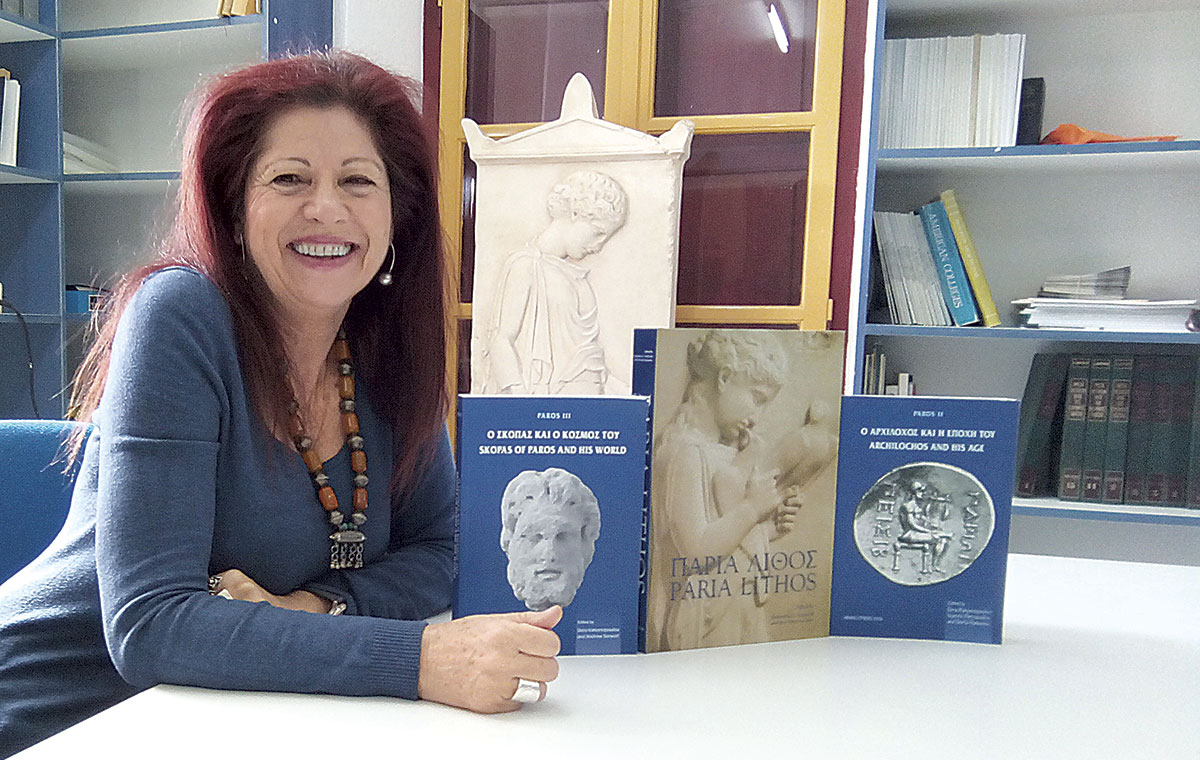Ι got to know and love Paros thanks to Skopas
An interview of Dora Katsonopoulou by Avgi Kalogianni, first published in PAROLA
Archaeologist Dora Katsonopoulou got to know and love Paros thanks to Skopas. As President of the Paros and Cyclades Institute of Archaeology, she has done something very important: almost every year, she invites here outstanding archaeologists and other scientists from Greece and abroad. The proceedings of these International Conferences – in excellently edited publications- make up an intellectual treasury, an invaluable source of information for the students of the island’s history.
Ms. Katsonopoulou, how was the Paros and Cyclades Institute of Archaeology born?
The Institute was founded at Paros in 1998. However, the idea was born at least a decade earlier, thanks to my strong interest in the work and personality of a great man of ancient Paros, the classical sculptor and architect Skopas, when I was at the Cornell University in the U.S. for doctoral studies in Archaeology. Skopas was the original incentive for my special interest in the island and its ancient heritage. Highlighting, protecting and promoting this heritage make up the core of the Institute’s work. The founding of the Institute owes much to the willing participation of colleagues and academics interested in Paros legacy and of Parians who love and respect the island’s history and cultural past.
What have you accomplished and what are your future plans?
Our major accomplishment, within the context of promoting Paros cultural heritage internationally, has been the holding of International Conferences under the name Paros. So far, we have organized five international Conferences dedicated to major cultural subjects connected with Paros: The first was dedicated to the most renowned marble of the antiquity, the Paria Lithos, the second and the third to two great personalities of ancient Paros, the poet Archilochus and the sculptor and architect Skopas, the fourth to the three major colonies Paros founded in the ancient world and the fifth to the ceramic art of Paros and the Cyclades from the 8th to the 6th century B.C. We have already published the volumes with the Proceedings of the three Conferences while the volume of the fourth will come out soon. At the same time, we are working on the volume of the fifth Conference held in 2017. These scientific publications undoubtedly stand out as a major work on the archaeology and culture of Paros, serving as ambassadors for the propagation and promotion of its culture at international level. Our plans for the immediate future certainly include a 6th International conference on intertemporal Paros from the antiquity till the 16th century A.D. -to be held in 2019.
We are also planning a series of scientific lectures, book presentations and exhibitions. One immediate goal is to organize cultural trips to regions Paros was related to in the antiquity, either as a metropolis of colonies or as a renowned cultural centre.
Which was the position and importance of Paros in the history of the Cyclades?
I’d say it was outstanding, probably more so than we have realised. For example, the recent finding, at an important arcahaeological site in South Italy, of ceramics revealing the presence and work of potters and vase painters from archaic Paros Indicates that early on Paros had established wide ranging relations in the entire Mediterranean basin. It is indicative that, though not the biggest island in the Cyclades, it was the only one to found colonies at key commercial routes in the East and the West: Parion at Propontis, Thassos in the North Aegean and Pharus on the Adriatic coast. A reference to Paros in a 5th century A.D inscription as the “most glorious city of Parians” is witness to its power and fame, even in the late antiquity when, in general, the Aegean was not at its best.
Summer 2018






